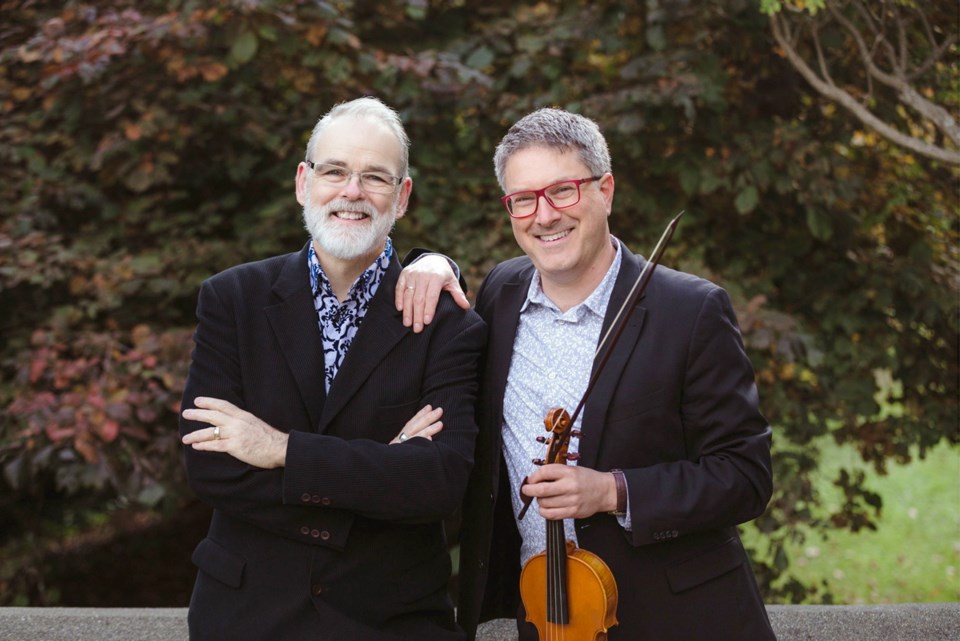Many worthy concerts will take place here in the next few days, and what follows does not exhaust the list.
Tonight, for instance, the Victoria Guitar Society will sponsor a recital by Raphaël Feuillâtre, a young Paris-based guitarist who is a master’s-degree student yet is already an established international concert and recording artist and a sought-after teacher (7:30 p.m., St. George’s Anglican Church, advance $25/$20/$15, door $30/$25/$20; ). Feuillâtre, who won the Guitar Foundation of America’s prestigious competition in 2018, is currently on an extended tour of sa���ʴ�ý, the United States, Mexico and Japan.
There will also be two faculty concerts in the University of Victoria’s School of Music, both in Phillip T. Young Recital Hall ().
Tonight, the Lafayette String Quartet will contribute to this year’s celebrations of Beethoven’s 250th birthday, with the first of the three Op. 59 quartets, which Beethoven wrote in 1806 for a Russian count, Razumovsky (8 p.m., $25/$20/$10). Monumental, richly eventful, pervasively original, this work marked a stylistic breakthrough among his quartets comparable to that of the Eroica among his symphonies.
The LSQ will also perform one of Haydn’s Op. 54 quartets and the innovative String Quartet 1931 by American composer Ruth Crawford Seeger, a short atonal work of remarkable imagination — dissonance for Good rather than Evil.
And on Saturday at UVic, soprano Anne Grimm and pianist Bruce Vogt will present a program of vocal works including lieder, cabaret songs, and show tunes, by composers ranging from Wolf, Stravinsky and Poulenc to Kurt Weill, Jacques Brel, Noël Coward and Rodgers and Hart (8 p.m., by donation).
Also on Saturday, the period-instrument duo comprising violinist Paul Luchkow and harpsichordist Michael Jarvis will offer the second concert in their fifth season of intimate chamber-music recitals (7:30 p.m., Chapel of the New Jerusalem, Christ Church Cathedral, $25/$5; pre-concert talk 6:45; ).
The duo’s current season focuses on various European courts. In October, it was London; on Saturday, it will be Sweden, which was a major musical centre in the 18th century. The program of solo and duo repertoire includes works by important early-18th-century Swedes (Agrell, Roman) and specimens of the polska, a Scandinavian folkdance dating back to the Renaissance, some forms of which were prototypes of the polonaise.
It is just the sort of rarely heard music this duo loves to program, though they will also offer violin sonatas by more famous Italians who evidently influenced the Swedish Baroque: Vivaldi and Corelli (his famous La folia sonata, Op. 5/No. 12).
Finally, on Sunday, the violist and conductor Yariv Aloni will preside over a special concert bringing together all three of the ensembles he conducts: the Sooke Philharmonic Orchestra, the Victoria Chamber Orchestra and the Greater Victoria Youth Orchestra (2:30 p.m., Farquhar Auditorium, UVic Centre, $25/$22/$10; ).
The ambitious program is devoted to Má vlast (My Fatherland), a cycle of six symphonic poems by the Bohemian (i.e., Czech) composer Bedrich Smetana, completed between 1874 and 1879.
(While completing the first piece, in the fall of 1874, Smetana began to lose his hearing, and soon he was totally deaf.)
Four of these symphonic poems depict places and characters from Bohemian history and myth: Vysehrad, the historic castle in Prague said to be the city’s founding place; the female warrior Sárka; Tábor, the city founded by Hussites (pre-Protestant Bohemian Christians) and used as their wartime camp; and the mountain Blaník, where warriors led by St. Wenceslas supposedly sleep, waiting to rescue their homeland in its darkest hour.
The other two pieces, From Bohemian Fields and Groves and Vltava, depict the Bohemian countryside and its people. Vltava, the most popular of the six pieces, and better known to us through its German title, Die Moldau, depicts the river that runs through Prague — its sources, its landscapes, a peasant wedding, dancing mermaids, its rapids and finally its entry into Prague.
These vivid and imaginative symphonic poems are substantial and self-contained enough to be performed separately, but they also form a coherent cycle, unified by recurring themes and other devices, and were first performed as such in 1882. Together they run about 75 minutes — perfect for a concert program.



